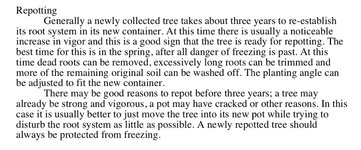Abhishek Dasgupta
Mame
Hi,
Am curious how people in US handle yamadori/collected common juniper apart from the normal repotting in pumice and letting them go for 3 years before any styling done ? I have read reports of how miserably they fail in a span of 2-3 years from collection and curious if people have successfully cracked the code .
Few weird anecdotes I have read :-
1. Ryan speaks of common juniper hating akadama soil without deeper explanation as to why - Is it because akadama breaks down in 2-3 years and that is not what a common juniper can get accustomed to and thus starts dying ?
2. Not using organic fertilizer but relying on chemical ones - https://www.bonsainut.com/threads/common-juniper-j-communis.19218/#post-262121
Am just curious from all people who have managed to keep common juniper beyond 5+ years from yamadori/collecting - how did you do it ?
Regards,
Abhishek
Am curious how people in US handle yamadori/collected common juniper apart from the normal repotting in pumice and letting them go for 3 years before any styling done ? I have read reports of how miserably they fail in a span of 2-3 years from collection and curious if people have successfully cracked the code .
Few weird anecdotes I have read :-
1. Ryan speaks of common juniper hating akadama soil without deeper explanation as to why - Is it because akadama breaks down in 2-3 years and that is not what a common juniper can get accustomed to and thus starts dying ?
2. Not using organic fertilizer but relying on chemical ones - https://www.bonsainut.com/threads/common-juniper-j-communis.19218/#post-262121
Am just curious from all people who have managed to keep common juniper beyond 5+ years from yamadori/collecting - how did you do it ?
Regards,
Abhishek
Last edited:


